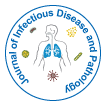West Nile Virus in the Modern World
Received Date: Jun 25, 2024 / Accepted Date: Aug 24, 2024 / Published Date: Aug 26, 2024
Abstract
West Nile Virus (WNV) has emerged as a significant public health concern since its introduction to the Western Hemisphere in 1999. This neurotropic virus, primarily transmitted through the bite of infected mosquitoes, particularly the Culex species, has shown a global distribution, with human, avian, and equine cases reported across continents. The modern world’s increasing urbanization, climate change, and global travel have contributed to the spread and evolution of WNV, challenging public health systems worldwide. Advances in molecular biology have provided insights into the virus's genetic variability, transmission dynamics, and pathogenesis, yet effective management remains complex due to the virus's ability to rapidly adapt to new environments. Current strategies emphasize vector control, surveillance, and public awareness, with ongoing research focused on developing effective vaccines and therapeutic interventions. This review explores the current status of West Nile Virus in the modern world, examining its epidemiology, impact on public health, and the challenges and opportunities for future control and prevention efforts.
Citation: Congrong T (2024) West Nile Virus in the Modern World. J Infect Pathol,7: 253.
Copyright: © 2024 Congrong T. This is an open-access article distributed underthe terms of the Creative Commons Attribution License, which permits unrestricteduse, distribution, and reproduction in any medium, provided the original author andsource are credited.
Share This Article
Recommended Journals
Open Access Journals
Article Usage
- Total views: 378
- [From(publication date): 0-2024 - Mar 29, 2025]
- Breakdown by view type
- HTML page views: 211
- PDF downloads: 167
